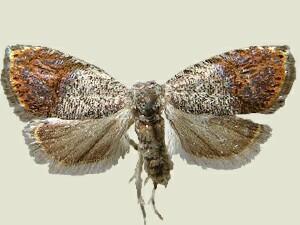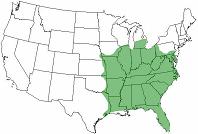Habitat
The zebra swallowtail butterfly makes its habitat in many areas throughout North America. Although Eurytides marcellus larva can be found throughout the United States, they rarely travel far from its major food source, the paw paw trees. Paw paw trees are located in the Southeast portion of the United States including West Virginia, Virginia, Delaware, and Maryland (Click here to view a map of the most recently verified sightings). These areas are primarily in low, moist woodlands near swamps and rivers (Chesapeake Bay Program 2012). The adult butterflies, unlike the larva, tend to live near open fields where a large abundance of flowers can usually be found. Zebra swallowtail butterflies live in freshwater marshes, which due to their high levels of nutrients are one of the most productive ecosystems on Earth. They support a wide variety of plants that in turn support a wide array of wildlife. Marshes like these have a purpose in minimizing flood damage and prevent surface runoff nutrients from overwhelming the ecosystem (United States Environmental Protection Agency 2012)
The larva primarily eat the leaves of the North American paw paw trees (Martin et al. 1999). The larva of E. marcellus feeds on paw paw trees because most plant tissues are not suitable food for them (Dammon 1988). Also, the larvae of the zebra swallowtail will sometimes eat caterpillars that are on the same plant as them (Animal Diversity Web 2001). The zebra swallowtail adult can also feed on the nectar of some flowers like blackberry, redbud, bugloss, verbena, blueberry, and common milkweed (Butterflies and Moths of North America 1977). They generally can feed from flowers with longer tubes because they have a proboscis, which is a flexible, long tongue (Animal Diversity Web 2001).
 One organism that lives in the same habitat as the zebra swallowtail
butterfly is Talponia plummeriana, which is a common pest
for paw paw trees. The T. plummeriana, a small mouth
larva, digs into the paw paw tree's fleshy tissues. This causes the
flowers to drop and wither (Kentucky State University Cooperative
Extension Program 2009). Dragonflies also live in the habitats with
zebra swallowtail butterflies. The female dragonflies lay their
eggs near the water where they live until they mature and hatch
(Kalkman et al. 2008). In this way the dragonflies are similar to
the zebra swallowtail butterfly because they are both highly
dependent on where their larvae live. There are also flowers in
this area, as mentioned above, that are used as food for the adult
butterfly(Butterflies and Moths of North America 1977).
One organism that lives in the same habitat as the zebra swallowtail
butterfly is Talponia plummeriana, which is a common pest
for paw paw trees. The T. plummeriana, a small mouth
larva, digs into the paw paw tree's fleshy tissues. This causes the
flowers to drop and wither (Kentucky State University Cooperative
Extension Program 2009). Dragonflies also live in the habitats with
zebra swallowtail butterflies. The female dragonflies lay their
eggs near the water where they live until they mature and hatch
(Kalkman et al. 2008). In this way the dragonflies are similar to
the zebra swallowtail butterfly because they are both highly
dependent on where their larvae live. There are also flowers in
this area, as mentioned above, that are used as food for the adult
butterfly(Butterflies and Moths of North America 1977).
There are also a wide variety of animals that live in the same area as the zebra swallowtail butterfly. Birds like eagles, ducks, swallows, and herons live in this wetland. Some mammals that share the mashland habitat are red foxes, raccoons, and otters. There are also a wide variety of reptiles like spotted turtles, northern water snake, and the diamondback terrapin that share this diverse environment with the zebra swallowtail butterfly (Chesapeake Bay Program). The mixture between the dry land and standing water provides a vibrant habitat for the zebra swallowtail butterfly.
.jpg)
